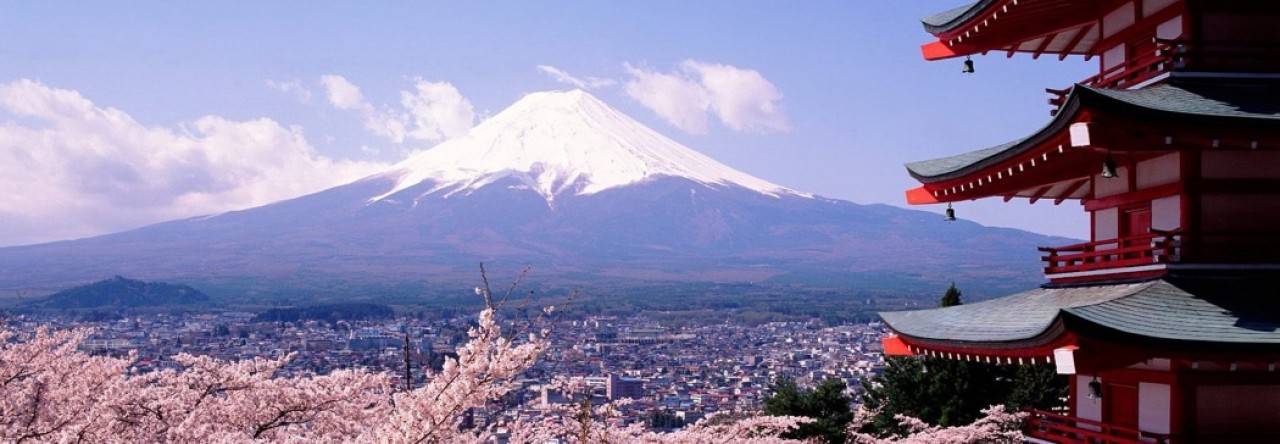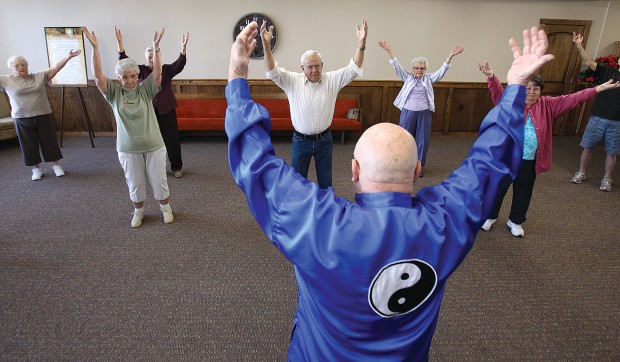
Inspirational video

Sitting and bending? It’s not so simple for seniors suffering from the ailments of age.
Serge “Moose” Azzolini, 76, of Kimberly offers a bit of relief in the form of a unique — and unpredictable — exercise for seniors.
For more than 60 years, the retired Marine has been involved in martial arts. Following tai chi in Vietnam, China, Korea and Japan, he found that the low-impact Chinese martial art can help seniors’ overall well-being.
“It teaches a better way to breathe,” he said. “The target is to improve balance, overall health, circulation, breathing and range of motion for joints — specifically relaxation and concentration.”
Azzolini began teaching tai chi at Kimberly’s Ageless Senior Center more than a year ago.
“Taekwondo, karate, those ‘harder’ forms train the outer warrior,” he said. “Tai chi trains the inner warrior.”
The free class is 9:30-10:30 a.m. Mondays, Wednesdays and Fridays at Ageless, 310 Main St. N. Azzolini adapted a variety of movements to create tai chi specifically for seniors.
“It has often been described as yoga in motion or kung fu in slow motion,” Azzolini said. “I teach by demonstration.”
What can you expect?Slow, steady movements using legs to balance the torso and arms to steady the body. While teaching, Azzolini describes the effects the movements have on breathing and blood flow.
Participant Annie Bradley, 84, said the past year’s tai chi benefited her in many ways.
“I have a bad foot so I can’t really do a lot,” she said. “But you know with arthritis and everything we (seniors) can have trouble sleeping, and I found myself in that same boat. Moose just kept saying ‘remember what to do’ and before long, I was out.”
Comparing traditional forms of exercise to tai chi, the seniors who attend the class said one thing stands out: relaxation.
“I’ve tried other types of exercise classes and they’re too hard on me,” said Wilma Smith, 82, who has varicose veins and arthritis in her knees. “This is a lot more relaxing.”
Jessie Wilcox, 79, of Kimberly, a friend of Bradley, joined the class at her friend’s encouragement.
“This is so much easier. It’s not so stressful,” she said. “I suffer from joint pain and a sciatic nerve.”
Wilcox said tai chi has helped her sleep.
“Sitting and bending isn’t something we used to have to think about,” said Janet Houfburg, 81. “In this we learn how to balance and how to totally relax. Going gung-ho in regular classes isn’t good for us. It just makes our muscles and bones stiff.”
Azzolini credits the success of his class to his lessons of proper breathing techniques and balance.
“I teach a better way to breathe and it all helps improve circulation in the blood to extremely vital organs,” Azzolini said. “It’s amazing to see the seniors performing tai chi, to see their movements coordinated with their breathing; it’s pure elegance.”

By Ken Ducote
Part I The Benefits of Martial Arts Training for Children and the most appropriate age to start.
Did you know that martial arts training is safer than most school sports for children? Research has shown that kids are injured less in a well supervised dojo/ dojang than on a football foeld, basketball court or baseball diamond. But that is not the only benefit to martial arts for kids. For starters, martial arts training gives the student an arena of self-discovery and a chance for he or she to set reasonable and obtainable goals for themselves. Studies show that in most cases, martial arts training increases the child’s self esteem, as well as the ability to focus and concentrate on tasks at hand. Martial Arts also help with coordination and motor skills in children who might seem or feel out of place in another area of physical activity. Many parents with children diagnosed with ADD or ADHD, report that their child’s success in school and social settings improve after some time in the martial arts due to the dicipline and concentration, as well as the structure required in a well run dojo/dojang with certified instructor’s experienced in teaching children. This benefit, as well as the the benifit one gets in the area of respect, both for self and others, flows over into other areas of the child’s lofe both on and off the mat.
Some parents may think that martial arts training promotes violence. They have watched the “Karate Kid” too much. In a traditional, well supervised dojo/dojang with the proper certified instructor’s, the martial arts acyually foster self dicipline, and socialization skills, which allow them to often walk away from a “bad” situation or at least be aware of it and not let themselves get involved. If taught traditional aspects of honor and integrity, they have nothing to prove. Using physical combat would be their last resort in self protection or protection of another who is weaker and bullied.
Dr Mimi Johnson of the American Academy of Pediatrics’ Committee on Sports Medicine and Fitness, says that, Age six is usually a good age to start class.” By this time the children have developed enough coordination and muscle control to function properly in class and socialize with other as well as have the desire to please the instructor. I know many will disagree, because schools to accept children as early as age three, but the research stands. We have tried ages 4and 5 and what we got was Roomper Room. Our Little Dragons program is from ages 6-10. At ten they graduate into the aduly class as novice, but with a well grounded foundation. This is for Taekwondo. We do not start young people in Hapkido until age 12-14 depending on maturity and body structure since these techniques have no “sport” application and are taught for defense only.
Instructors should be Black Belts with a desire to work with children and a willingness to study early childhood behavior. Being a Black Belt is simply not enough. They should also be certified by their alliance as instructors and when necessary be firm, but kind. On the other side of the coin they should the encouraging and pastoral as well. The World Taekwondo Federation sets the age for a first degree black belt at 15. It takes more than the ability to “Parrot” movements as an instructor. As true, mature Black Belt, understands martial arts philosophy and well as combat or sport skills. The instructor should be a role model for the child. It is in the modeling, that the psychologist Bandura explains, that the child learn and grows to mimic what has been presented. Remember, the child before you today, is the future of tomorrow.
Powered by WordPress & Theme by Anders Norén